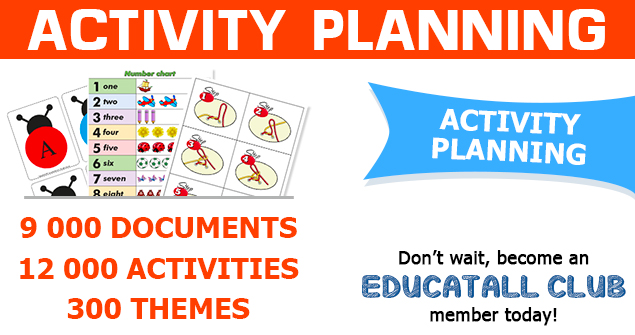Should I worry about a child who walks on her tiptoes?
Most children will tiptoe at some point during early childhood. Many children will walk this way when they first start to walk autonomously. At this developmental stage, walking on tiptoes simply demonstrates the immaturity of a child's postural control and of his/her body awareness. The sustained contraction of his/her calf muscles helps the child compensate this immaturity.
Many children continue to walk on their tiptoes long after they have learned to walk. For some, walking on their tiptoes is omnipresent, to the point where it can represent the only way they move about. Although in many cases doing so is simply an unconscious bad habit or temporary behavior without a precise origin, it can represent a much more complex problem that may require an intervention.
Different hypotheses can explain why a child may walk on his/her tiptoes and many causes may coexist in some children.
Different possible situations:
- Max was born with an Achilles tendon that is too short. It is therefore impossible for him to completely unroll his foot to deposit his heel on the ground. For Max, walking on his tiptoes is inevitable and an orthopedic intervention will most likely be necessary to correct the problem
- Josie was born prematurely and her development has been slower than average since birth. She is now four years old and her postural control remains immature. Among other things, we can observe a certain disparity in the coordination of her core extensor and flexor muscles. An exercise program aiming to help her gain muscular control in her core muscles may eliminate Josie's need to walk on her tiptoes by compensating this immaturity.
- Louis has difficulty feeling his body. Proprioceptive messages sent by our muscles and tendons help us recognize the position of our body in a given space. Louis' system has trouble processing these messages unless they are intense. By walking on his tiptoes, the proprioceptive message in his calves is stronger and therefore makes it possible for Louis to feel his legs and feel "grounded". Louis may benefit from interventions aiming to develop his body awareness.
- Alexia is hypotonic and hypermobile. This means that she has poor muscle tone and her ligaments lack rigidity. As was the case for Louis, this condition limits the quantity of proprioceptive messages that can be sent to her brain to maintain her balance. Thus, Alexia's system tends to compensate by increasing the quantity of messages on her tiptoes. Activities that support sensory treatment will be useful for improving the quality of Alexia's walking, particularly those linked to her vestibular system which is responsible for muscle tone.
- Marie-Jeanne has difficulty with sensory modulation upon waking. It is as if her system is unable to naturally be sufficiently alert for her to function. It therefore compensates by searching for stimuli (impacts and movements) to wake up her body. Children in Marie-Jeanne's situation normally display several behaviors linked with proprioceptive stimulation, beyond walking on their tiptoes. For example, they may throw themselves on the floor, lean on objects, grind their teeth, etc. Marie-Jeanne may have less of a tendency to walk on her tiptoes if she performs exercises that are part of a sensory activity program at certain times throughout the day. These exercises would provide the stimulation her body requires for optimal modulation.
- Raphael's sensory processing system is still immature. Among other things, his system has difficulty processing several stimuli simultaneously (inefficient multisensory management). This limits Raphael's capacity to feel his body and emotions at the same time. It's as if the processing of his emotions takes away from his ability to process his body's cues. Being on his tiptoes increases the muscle tone in his legs and therefore helps him improve his perception of his body. This is often seen in autism cases. Interventions that aim to improve the maturity of his sensory processing as well as his ability to decode, understand, and manage his emotions will be useful for Raphael.
- Anthony does not like the soles of his feet being in contact with the ground. This stimulation causes discomfort. By walking on his tiptoes, he is working around this problem. Anthony clearly has a tactile hypersensitivity. This tactile hypersensitivity is also present in his hands and face, as is the case with many children with this problem. Desensitization activities combined with interventions aiming to keep his system calm may be helpful to reduce exaggerated defense reactions when facing inoffensive stimuli.
- Imagine for an instant the way you walk in the dark, your difficulty to perceive your body within your environment automatically generates a certain postural insecurity and movements that are more rigid. For Cara, who has difficulty integrating information originating from her eyes and her sense of balance, an inefficient perception of her environment limits her ability to move about comfortably. Walking on her tiptoes provides a "grounding" sensation. To be beneficial, interventions will have to address the source of the problem and teach her system to accurately integrate her movements with what her eyes perceive. Beyond an occupational therapist, a developmental optometrist could provide useful expertise in her case.
- Caroline is an anxious little girl. Thus, she keeps her system in an almost constant state of stress. The tendon guard reflex is a normal reflex used to stabilize a person who is stressed through his/her feet, particularly by contracting the calves and feet. This increases Caroline's ability to perceive potential threats in an environment while preparing her fight or flight response in her lower limbs. For Caroline, the hyperreactivity of her tendon guard reflex leads her to walk on her tiptoes (keeping her legs and feet in a constant state of alertness). Caroline should work on reducing the level of physical anxiety present in her body while also working on improving her ability to decode and interpret her environment to differentiate actual danger sources from anxious thoughts (afraid of being afraid). Recognizing her anxiety and developing coping mechanisms that will help her manage it can also be helpful.
- Julian suffers from cerebral palsy and Marco suffers from muscular dystrophy. These neurological impairments are called spasticity. Spasticity is, in many ways, the opposite of hypotonia. Muscle tone is generally too high or involuntary muscle contractions can be present. Spasticity in their calves and/or feet can cause them to walk on their tiptoes. For Julian and Marco, interventions should focus on preventing the shortening of their muscles and optimizing and supporting their ability to walk.
What to do?
- First of all, do not worry prematurely. The situations described above are possibilities, but they do not represent the norm. As mentioned at the beginning of this article, walking on tiptoes is not abnormal as such. Consider whether or not there is a physical or social impact on the child's daily habits before beginning to worry or considering various interventions.
- In all cases, you may introduce stretching exercises to prevent the child's muscles and tendons from shortening permanently.
- Consulting a professional, with or without referral from your family doctor, will help you determine which hypothesis should be explored first and if more specific interventions are required.
Josiane Caron Santha
Occupational therapist

 Home
Home Theme activities
Theme activities
 Babies and toddlers
Babies and toddlers
 Arts and crafts
Arts and crafts
 Science
Science
 Creative recipes
Creative recipes
 Tips and tricks
Tips and tricks
 Special needs
Special needs
 Extra activities
Extra activities
 Educ-TV
Educ-TV
 Newsletter
Newsletter  Online store
Online store Educatall club
Educatall club

